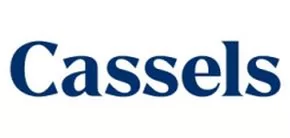- within Intellectual Property topic(s)
- in United States
- with readers working within the Media & Information industries
- with readers working within the Media & Information industries
- within Food, Drugs, Healthcare, Life Sciences, Cannabis & Hemp, Litigation and Mediation & Arbitration topic(s)
- with Senior Company Executives, HR and Finance and Tax Executives
The implied undertaking rule prohibits litigants from using information obtained through the discovery process for any purpose other than the proceeding in which the information was disclosed. The Federal Court recently released back-to-back decisions on requests for relief from the rule. In the first, GE Renewable Energy Canada Inc. v Canmec Industrial Inc., 2025 FC 478 [GEREC], a copyright action, the Court granted relief from the implied undertaking rule so that information disclosed during the discovery process could be used as the basis for a claim in a second proceeding. In the second decision, a trademark infringement and passing off action, Seylynn (North Shore) Development Limited Partnership v Denna Homes Group et al, 2025 FC 491 [Seylynn], the Court refused to lift the implied undertaking to allow information obtained on an examination for discovery to be used at a hearing in a second proceeding.
While the Court applied a consistent legal framework of the rule in each decision, it reached opposite results. The Court also commented that, in the context of intellectual property litigation, relief from the implied undertaking will be analyzed in the same manner applied in other contexts.1
The Implied Undertaking Rule
The implied undertaking rule provides that parties are deemed to undertake to the Court that they will keep information obtained during pre-trial discovery confidential and use it only for the purpose of the litigation in which it was obtained. As set out by the Supreme Court of Canada, the purpose of the rule is to encourage fulsome pre-trial disclosure and protect the litigant's privacy rights in compulsory disclosure.2 The implied undertaking rule has been recognized by the Federal Court as part of procedural common law.3 It has also been codified by certain provinces as the similar but distinct "deemed undertaking rule."4
The Court has discretion to grant relief from the implied undertaking rule in "exceptional circumstances,"5 including where doing so is necessary to impeach a witness who gives contradictory evidence in a different proceeding.
GE Renewable Energy Canada Inc. v Canmec Industrial Inc., 2025 FC 478: The Implied Undertaking Is Spent or, Alternatively, Waived
Rio Tinto hired GE Renewable Energy Canada Inc. (GEREC) to refurbish a power plant. In doing so, GEREC shared manufacturing drawings with the defendant, Canmec Industrial Inc (Canmec). Later, GEREC claimed that Canmec infringed copyright by using GEREC's proprietary drawings to bid successfully for other work from Rio Tinto. GEREC intended to use the information obtained on discovery in the copyright action in a new breach of contract and copyright infringement proceeding against Rio Tinto and Canmec in Quebec.
GEREC sought a declaration that the implied undertaking rule did not apply to information learned from Canmec on discovery. If the rule did apply, GEREC sought an order granting relief from its application.6 In support of its motion, GEREC filed its draft pleading in the Quebec proceeding.
Scope of the Motion Must Be Sufficiently Defined: Canmec argued GEREC failed to sufficiently define the scope of its request for relief from the implied undertaking rule because it did not adequately identify the information at issue and failed to explain how the implied undertaking had been waived.7 The Court noted that, while GEREC kept its Quebec pleading deliberately open-ended, it was not difficult to glean what information was at issue.8 Even so, the Court noted that, in seeking equitable relief, such as relief from the implied undertaking rule, a party must "present its request as clearly and precisely as possible" because "it is not for the opposing party, or the Court, to fill in the gaps in a moving party's motion."9
The Implied Undertaking Does Not Apply to Materials Filed Publicly in Court: GEREC sought an order confirming that information provided in its Quebec pleading was no longer subject to the implied undertaking rule because it had formed part of public Court filings and orders at earlier stages of the action. The Court was satisfied this was the case and noted the materials disclosing the allegedly protected information were filed for a bona fide purpose. Neither Canmec nor Rio Tinto argued that the information was objectively confidential or should have been filed under seal.10 The Court ultimately held that "the implied undertaking ends when information or documents are filed in open Court, including on an interlocutory motion."11
Relief from the Implied Undertaking is Granted: The Court was satisfied that GEREC sought to use information obtained in the copyright proceeding against the same or similar parties, in relation to the same or similar issues, and that, since the "prejudice to the examinee is virtually non-existent" in those circumstances, relief from the implied undertaking should be granted.12 The Court noted the only prejudice Canmec and Rio Tinto identified was the impact on their privacy interest, which the Court considered minimal.
Seylynn (North Shore) Development Limited Partnership v Denna Homes Group et al, 2025 FC 491: No Relief from the Implied Undertaking is Warranted
In a proceeding before the Federal Court, Seylynn (North Shore) Development Limited Partnership and Dr. Abo Taheri both claim to own certain DENNA trademarks and trade names and allege that the other party and related entities are infringing those marks and engaging in passing off. Immediately following examinations for discovery, one of the defendants sought relief from the implied undertaking rule to use Dr. Taheri's discovery transcripts in a petition for shareholder oppression in British Columbia. That defendant argued that the evidence given on discovery in the Federal Court proceeding was inconsistent with affidavit evidence given by Dr. Taheri in the BC proceeding.
Commonality between Parties Not Established: In Juman v Doucette [Juman], the Supreme Court of Canada held that prejudice will be "virtually non-existent" where material in one action is sought to be used in another action with the same or similar parties and the same or similar issues.13 In this case, the Court was not satisfied that the nexus between the parties was sufficient because neither of the individuals involved in the Federal Court action was personally involved in the BC proceeding.14
Commonality Between Issues Not Established: The Court also found that the issues in the Federal Court action were not sufficiently similar to the issues in the BC proceeding. The Court found there may be a tangential relationship between the issues in both proceedings, but ultimately the Federal Court action and the BC proceeding seek different relief. The Court reached this conclusion with reference to the statement in Juman that "Courts have generally not favored attempts to use the discovered materials for an extraneous purpose, or for an action wholly unrelated to the purposes of the proceeding in which discovery was obtained in the absence of some compelling interest."15
No Greater Public Interest to Justify Relief: The Court also found that the defendant had failed to explain how he intended to use the transcripts in the BC proceeding and failed to put the alleged inconsistent statements to Dr. Taheri at discovery.16 The Court was satisfied that the defendant's failure to file evidence as to how the transcripts would be used and the obvious potential for prejudice to Dr. Taheri was fatal to the motion and that granting the relief would be improper and run afoul to the proper administration of justice.
The Takeaways
GEREC and Seylynn provide useful examples of how the implied undertaking rule is applied in the Federal Court. The approach taken in both cases emphasizes the importance of a clear nexus between the parties and the issues so that the Court is satisfied that there will be no prejudice if information obtained on discovery in one proceeding is used in another. The decisions also make clear that, in seeking relief from the implied undertaking rule, parties must clearly define the scope of their request, identify the information at issue, and explain how they intend to use the information or documents in the other proceeding.
Cassels acted on behalf of the defendant/plaintiff by counterclaim, Dr. Abo Taheri, in Seylynn (North Shore) Development Limited Partnership v Denna Homes Group et al, 2025 FC 491.
Footnotes
1 Juman v Doucette, 2008 SCC 8 at para. 23. GE Renewable Energy Canada Inc. v Canmec Industrial Inc., 2025 FC 478 at para. 108.
2 Juman v Doucette, 2008 SCC 8 at para. 24-28.
3 GE Renewable Energy Canada Inc. v Canmec Industrial Inc., 2025 FC 478 at para. 37.
4 GE Renewable Energy Canada Inc. v Canmec Industrial Inc., 2025 FC 478 at para. 37. See e.g., Ontario Rules of Civil Procedure, RRO 1990, Reg 194, Rule 30.1.01; Manitoba Court of King's Bench Rules, Man Reg 553/88, Rule 30.1.
5 Juman v Doucette, 2008 SCC 8 at para. 32.
6 GE Renewable Energy Canada Inc. v Canmec Industrial Inc., 2025 FC 478 at para. 2.
7 GE Renewable Energy Canada Inc. v Canmec Industrial Inc., 2025 FC 478 at para. 20.
8 GE Renewable Energy Canada Inc. v Canmec Industrial Inc., 2025 FC 478 at para. 31.
9 GE Renewable Energy Canada Inc. v Canmec Industrial Inc., 2025 FC 478 at para 30.
10 GE Renewable Energy Canada Inc. v Canmec Industrial Inc., 2025 FC 478 at para 87.
11 GE Renewable Energy Canada Inc. v Canmec Industrial Inc., 2025 FC 478 at para 4.
12 GE Renewable Energy Canada Inc. v Canmec Industrial Inc., 2025 FC 478 at para 97; Juman v Doucette, 2008 SCC 8 at para 35.
13 Juman v Doucette, 2008 SCC 8 at para 35.
14 Seylynn (North Shore) Development Limited Partnership v Denna Homes Group et al, 2025 FC 491 at para 23.
15 Seylynn (North Shore) Development Limited Partnership v Denna Homes Group et al, 2025 FC 491 at para 24.
16 Seylynn (North Shore) Development Limited Partnership v Denna Homes Group et al, 2025 FC 491 at para 33-34.
The content of this article is intended to provide a general guide to the subject matter. Specialist advice should be sought about your specific circumstances.




